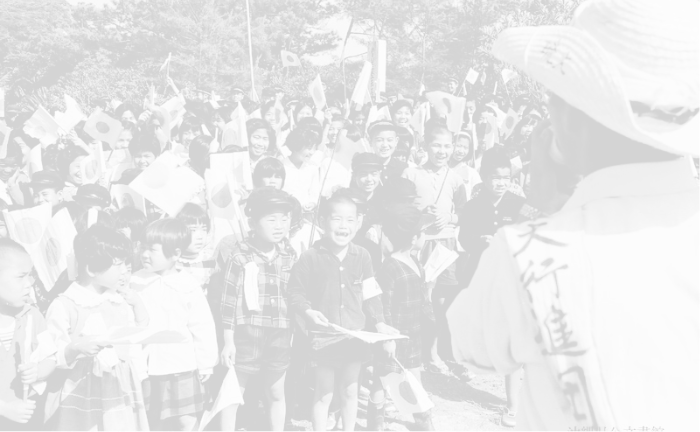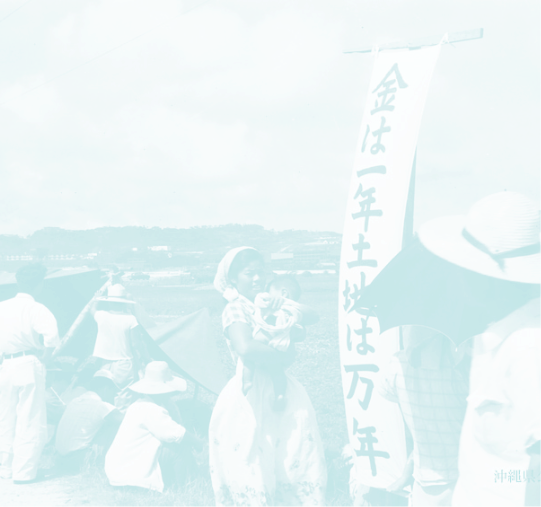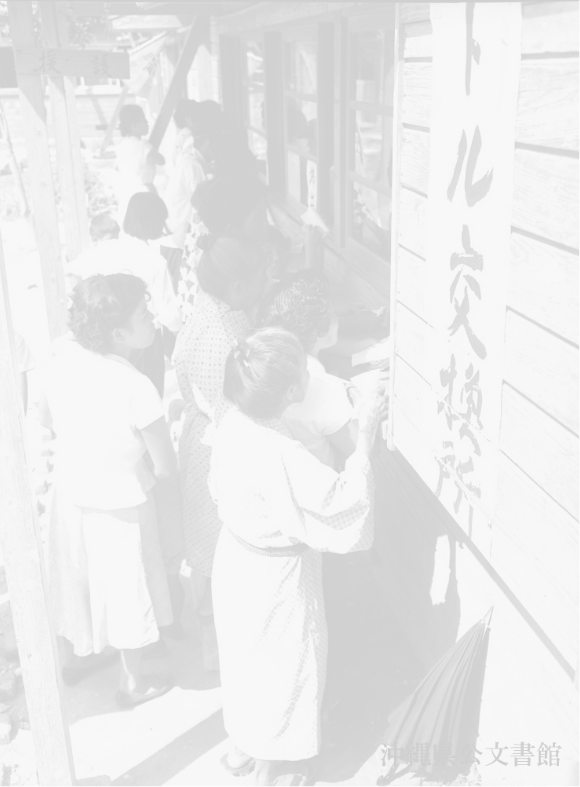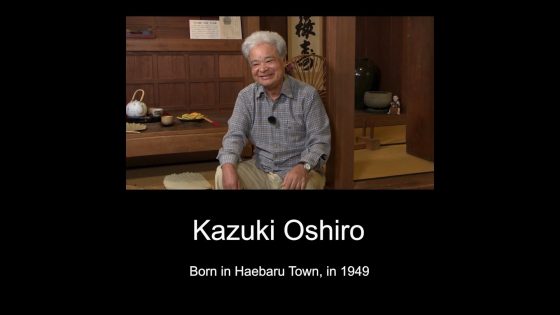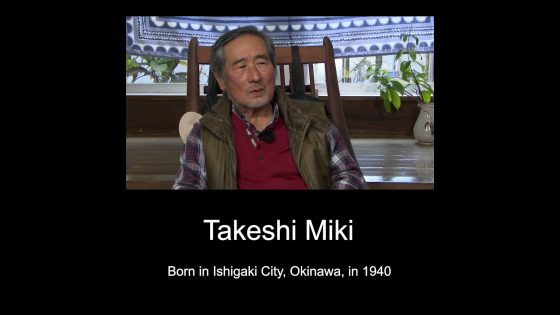
Educators in Okinawa Aiming for the Restoration of Education
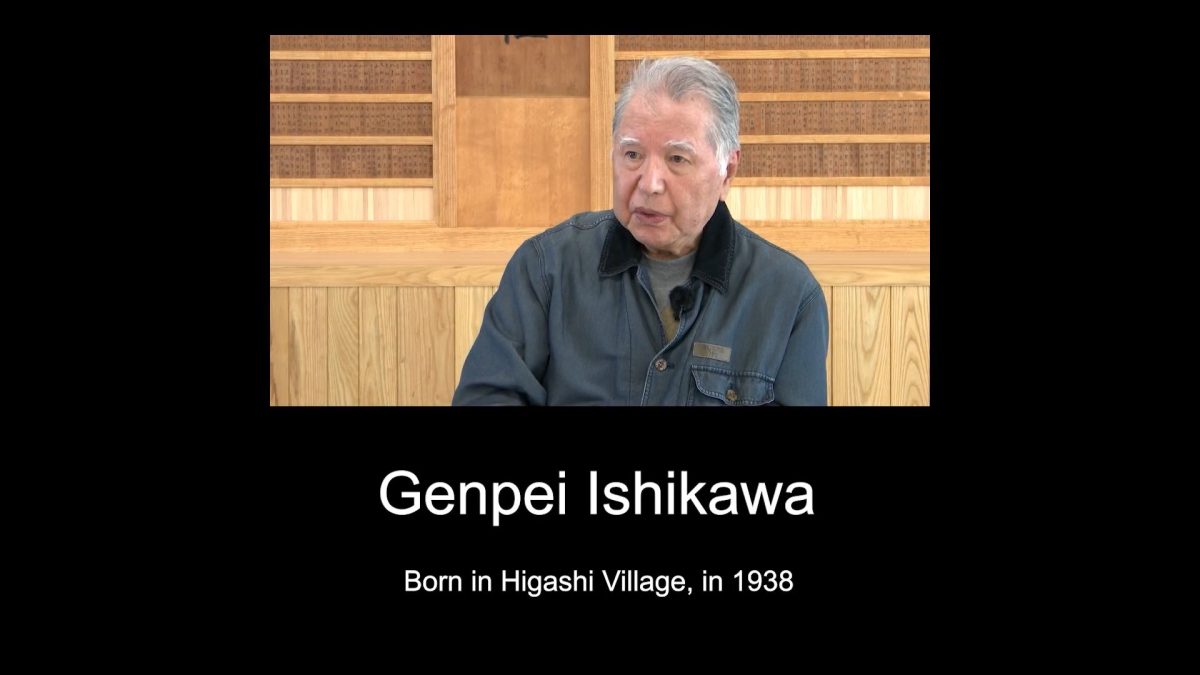

- Born in 1938
- Genpei Ishikawa
Index
- Brief biography of the witness
- Okinawa Teachers Association Activities
- Addressing educational issues in postwar Okinawa
- Founding philosophy and role of the education center
- At the Site of the Struggle to Stop the Two Laws on Educational Personnel
- Choubyou Yara’s character and thoughts on Okinawas
- Message to Younger Generations
Timeline
| 1938 |
Born in aza Arume, Higashi Village.
|
|
|---|---|---|
| 1957 |
Graduated from Hentona High School and worked as a substitute teacher at Arume Elementary School and other schools.
|
|
| 1960 |
The Okinawa Prefectural Reversion Council (Fukkikyo) was established.
|
|
| 1960 |
Hired by the Okinawa Teachers Group and assigned to the General Affairs Department, where he also served as secretary of Choubyou Yara.
|
|
| 1967 |
On February 24, participated in The struggle to stop two laws on educational personnel.
|
|
| 1968 |
The first election for Chief Administrative Officer was held and Choubyou Yara was elected.
|
|
| 1971 |
The Okinawa Teachers Group was dissolved. The Okinawa Prefectural Teachers Association was formed, and he became director of the General Affairs Department.
|
|
| 1972 |
On May 15, Okinawa's administrative rights were returned to Japan. (Reversion of Okinawa)
|
|
| 1983 |
Served as a member of the Central Executive Committee of the Okinawa Prefectural Teachers Union and as a permanent director of the Japan Council Against Atomic and Hydrogen Bombs.
|
|
| 1991 |
Elected Chairman of the Executive Committee of the Okinawa Prefectural Teachers Association (until 1999).
|
Story
Brief biography of the witness
A former chairman of the executive committee of the Okinawa Teachers Association. He held many positions as an official of the Okinawa Teachers Group and the Okinawa Prefectural Teachers Association, and over the years has devoted himself to the reconstruction of education and the resolution of social issues in post-war Okinawa. He also served as secretary to Choubyou Yara, the first publicly elected president, and is well acquainted with Yara's personality and philosophy.
Okinawa Teachers Association Activities
About the Okinawa Teachers Association
The Okinawa Teachers Association was an all-encompassing organization of teachers and others involved in the restoration of education in war-ravaged Okinawa during the US occupation, including kindergarten through elementary, junior high, high school and university, in the public and private sectors. Mr. Choubyou Yara placed the utmost importance on this. This association was organized with ideas that would lead to today's concept of “All Okinawa.” In postwar Okinawa, political parties, labor unions, and other democratic organizations were still weak. But the Okinawa Teachers Association was very active in its efforts to restore education. I also have the impression that the association worked hard to promote the Restoration of Okinawa from War Damage. Mr. Choubyou Yara was a really great leader. I think he played a very important role for this organization, the citizens, and the children. In 1947, the Okinawa League of Education, which was the predecessor to the Okinawa Teachers Association, set up the Education Hall in approximately two Quonset hut classrooms. And then, the Okinawa Teachers Association was formed here on April 1, 1952. At the end of 1954, the Education Hall moved to Kumoji. I have heard that, despite various obstacles from the US side, after the building was completed, they began a fully-fledged educational restoration movement.
Teachers' Activities
At that time, it was under the US rule. Educational restoration for children was the top priority, but the Okinawan base issue also began with the enclosure of bases and developed into an island-wide land struggle that reached its peak in 1956. Teachers were also deeply involved in this. The Council for the Protection of Land in Okinawa was formed in the hall of the Education Hall. Mr. Choubyou Yara became the president of the council. Mr. Shoukou Ahagon from Iejima Island was the Secretary General. Including things like this, young teachers were also members of the local youth group. I also have the experience of serving as the president of a youth group in a small village. In preparation for September 8, 1951 (the signing of the Peace Treaty), there was a movement to deliver signatures to the United Nations demanding Okinawa's return to Japan. I heard that the youth group played a central role in this movement. I learned about such recorded history.
Addressing educational issues in postwar Okinawa
Movement for the Four Civilian Laws on Education
After the war, mainland Japan had a constitution. Although we in Okinawa under US rule could not participate. The Basic Education Law states, “The realization of the ideals of the Constitution must be fundamentally enshrined in the power of education,” which is a very convincing statement. Okinawa was not included in the applicable system. In order to resist this, we aimed to introduce four school education laws; the Basic Education Law, the Social Education Law, and the School Board Law. They are called the Four Civilian Laws on Education. But especially for the US occupation system, contact between Okinawa and Japan was highly disliked. Moreover, they did not like the idea of implementing Japanese education. However, the textbooks used in schools were mainly imported from the mainland by teachers and Ryukyu Bunkyo Tosho Co., Ltd. was established in 1950. Rather than businessmen, school teachers and teachers' associations and mutual aid associations become major shareholders and established Ryukyu Bunkyo Tosho Co., Ltd. to import textbooks. As seen in these efforts. Although Okinawa was under US rule, they were trying to implement something in Okinawa that would be commensurate with the Basic Education Law in mainland Japan. The Central Board of Education at that time was the current Okinawa Prefectural Board of Education, and there was a Legislature comparable to the current prefectural assembly. All of them unanimously said they wanted to pass the Four Civilian Laws on Education but this was rejected. The reason for this is that the sentence of “as Japanese citizens” was included in the preamble of the Basic Education Law. The US didn't like this. It was rejected twice. Normally, anything passed by the Legislature becomes law once it is signed by the then-Chairman Shuhei Higa. However, the chairman could not sign it, so it was rejected twice. The third time this happened was on January 10, 1958. The day before that, a messenger from the High Commissioner came to Mr. Choubyou Yara, the president of the association. He confirmed the president’s intention, asking what would happen if the legislation for the Four Civilian Laws on Education was rejected three times. He explained that if the Four Civilian Laws on Education were rejected, they would fight till the end and that if this was legislated, the school scene would have a calm base, and the messenger reported this opinion to the High Commissioner. It is said that the Four Civilian Laws on Education became enacted the next day. They were promulgated on January 10, 1958. So, laws were passed that allowed for education as a Japanese in Okinawa, where the US had administrative authority.
Aiming for the Acquisition of Fees for Compulsory Education
In 1965, Prime Minister Sato come to Okinawa for the first time. The previous year, the Compulsory Education Fee Acquisition Committee was established. There is a provision in the Japanese Constitution that compulsory education is free, but children and teachers in Okinawa were not benefiting from this at all. I think they also made a request to the Japanese government. The national treasury paid for compulsory education expenses and paid half of the teachers' salaries. This was the biggest aspect, but the most noticeable aspect was the free distribution of textbooks. When Prime Minister Sato came to visit, Choubyou Yara petitioned for these matters as the chairman of the Compulsory Education Fee Acquisition Committee. For this petition, it was allowed, and from the following year, this was budgeted for, and the free distribution of textbooks came to fruition.
Fundraising Movement for the Restoration of Okinawa from War Damage and “Teaching Tools of Love”
The Association to Promote the Restoration of Okinawa from War Damage was formed, led by the Teachers Association in 1952. They were trying to raise a huge amount of money by promoting their idea to the whole country. Mr. Yara had a connection with the Okinawa Kenjinkai in the Tokyo area and many leading scholars who had ties to Okinawa. He collaborated with Mr. Shien Yoshida, who was the secretary general of the Southern Area Brotherhood Relief Association, and Mr. Nobumoto Ohama who served as president of Waseda University. We created a system in which mainlanders can also accept this. At that time, the term “national pilgrimage” was often used, which was a six month trip from Hokkaido to Kagoshima, for fundraising purposes. Approximately 70 million yen was raised, and donations were being made within Okinawa as well. When we got contact from the mainland to go and pick up the donations, we couldn't go to pick them up. The reason was that USCAR (the US civil government for the Ryukyu Islands) didn't like it. Choubyou Yara made an album containing photographs of the most important school buildings that had been burned to ashes in the Battle of Okinawa, and were in a state of being turned into stable school buildings, and took it to the mainland. He not only explained the condition of the war-damaged school buildings, but also expressed his hope for the immediate return of Okinawa to Japan. This led to a reaction by the US. A strong order was issued to customs authorities to prevent Yara from leaving Okinawa. He was not allowed to travel, so he couldn't go to pick it up. Procurement of supplies was permitted, so everyone pooled their wisdom and the Okinawa Teachers Association conducted interviews with each school to find out what educational equipment they wanted. Schools needed books, first. Then an organ, piano, and physical education equipment such as a vaulting box, and science experiment equipment, etc. Some of the bells were made of brass. The use of donations was changed to these teaching tools, and from the Restoration of Okinawa from War Damage, it became “Teaching Tools of Love. “There is also a record of this as a photograph.
Founding philosophy and role of the education center
Changes in the Education Hall and Memorial
The Educational Hall in Kumoji met the miserable fate of demolition. The hall is a building filled with the history of all the post-war democratic movements, and has held up well since 1954, until it was demolished the year before last (2021). The founding philosophy of the Education Hall has the same resolve as in the past: “Never send your students to the battlefield. “And many bereaved survivors of war and other organizations erected many stone monuments in Mabuni, Itoman. It appears there was talk of making stone monuments for those involved in education who died in the war. Since there was talk of cenotaphs and stone monuments early in the postwar period, surveys by former municipalities were conducted during the actual phase of these discussions. We conducted a survey of education-related war dead from the 12 district Teachers Association in Okinawa through their respective schools. The records of these surveys are in good order. Memorial services for education-related war dead began in 1952with a memorial service held on the grounds of Daido Elementary School.
Establishment of the Education Hall and Cenotaph in Kumoji
The Okinawan way of worship is definitely the Buddhist altar. When thinking about how to honor the war dead, from the first graders of national schools to the principals of normal schools, the appropriate thing to do would be to build an educational hall and a memorial room there. If you build a memorial outside, you wouldn't be able to visit it every day. However, with Okinawan Buddhist altars, you can access it in the morning and evening. One of the purposes of construction is to make a pledge. It seems that there was a strong desire to spread the word to the world that it was a base for anti-war peace. The other reason was that the US was interfering with the activities of the Teachers Association, so the Kumoji Education Hall was built as a base for teachers and staff to gather together. That hall was not only used by the Teachers Association; during the island-wide conflict in 1956, everything from preparations to the inaugural meeting was held there. This may be because there were few facilities such as halls at that time. The role played by the Okinawa Teachers Association in realizing education, children, and citizens' issues were too great. Because of that, the history and footprint of the Okinawa Teachers Association is said to be the history of Okinawa itself.
A Place to Reflect on the Past and to Make a Pledge
A monument to all students from 21 schools mobilized for the Battle of Okinawa was also erected in Mabuni. One thing I regret about this is that we sent my students to the battlefield. As part of the Himeyuri student corps, students were also sent out from this place. That's why this is the site of Himeyuri Gakusha, and this is a part of it. It is an appropriate place to reflect on the past of sending students to the battlefield, and to make a pledge to never send students to the battlefield. Times have changed, but with a new determination, we are here to say what we could not do in anti-war peace education. I hope that people will carry on this mission and do their best to protect the lives of children and the lives of the people of the prefecture.
At the Site of the Struggle to Stop the Two Laws on Educational Personnel
The Struggle to Stop Two Laws on Educational Personnel
There was a pair of controversial laws: one was the Local Educational District Public Employees Act, and the other was the Special Rules for the Public Educational Personnel and Staff Act. As I remember, on the mainland, the fight against performance evaluation had been picked up by the media and had attracted public attention. Three things became issues: The first was the prohibition of industrial action such as strikes. The second was having a performance evaluation. The third was limiting political action. In Okinawa, political battles were prohibited. At first it was just a restriction. This ultimately led to the prohibition of political activities. During the years-long struggle, there was a time when there was talk internally that if democratically enacted, the two laws would be fine, but they would be enacted based on the will of the US. At the time, Mr. Matsuoka was the Chief Executive and the ruling party was the Democratic Party. So, in response to the US's request, they tried to enforce this. On February 1, 1967, the High Commissioner was scheduled to give a speech at the beginning of the opening of the Legislature. In the US, there is a President's Message. In response, he was scheduled to give a speech on US policy in the Ryukyus, but was unable to do so. More than 20,000 people surrounded the Legislature building. I think High Commissioner Unger probably came to the US Civil Government Building, and saw the situation. I think this was very good. This was because the situation later affected his decisions. As a result of this, finally, on February 24th in 1967, we blocked the vote on the two laws and won an agreement to scrap them. Approximately 900 police officers.
Protest in front of the Legislature (February 24, 1967)
If the demonstrators could stand in the way and secure it, it seemed like they could enforce it. However, in the early morning hours, female teachers in particular were chased away by riot police. In one case, the husband was actually a police officer and the wife was a teacher. There was also a teacher-pupil relationship. The live radio broadcast was like a live baseball game. Many people also heard about it and participated, and it eventually reached 25,000 people. Although there were only about 9,000 teachers gathered from around the main island, 25,000 people gathered. Many members of the prefectural labor union council, democratic organizations, and political parties were also in attendance. According to various reports, there were many ordinary people there too. It was a situation where the police were standing in the way of the tens of thousands of people protesting, and it was swaying like waves as they pushed each other. And then the demonstrators were able to pull back and overwhelm the police force. So, the entire front-line police force eventually disappeared. So the battle was decided outside the Legislature. This kind of back and forth continued, and by the evening everyone was still there. We had a strong feeling that we would not go home until we achieved the scrapping of the law. As a result, we were able to come to an agreement: If they couldn't come to an abolition agreement by how many months and days, the law would be scrapped. It meant that the US tried to suppress the Teachers Association against the return to Japan movement, but was unable to do so. It had great historical significance given the situation in Okinawa at the time. I wrote in my history of the struggle over the two laws that the struggle to stop these laws was the biggest driving force in the reversion of Okinawa to Japan in 1972. High Commissioner Unger announced in his speech on February 1 in 1968, that public election of the chief executive would be recognized. Until then, there had been a huge struggle to prevent the appointment of a publicly elected president. Therefore, for the first time in the post-war period, a direct election was held without such conflicts. That's what happened the year after the struggle to stop the two laws.
The Achievements of the Teachers Association
The teachers' efforts were to protect the human rights of the prefectural residents and children, although there was a land struggle. The Ryukyu government was poor, and had not been able to improve the benefits for teachers. Even though they wanted to improve them, they couldn't. The US civil government said civil administration comes first. But in reality, the military came first. The military was given priority, as symbolized by Military Road No. 1 (now Route 58). Even though civil administration came first, education was still being neglected. Although the Constitution of Japan provided for free compulsory education, but it wasn’t applied to Okinawa. Specific requests were made, such as the distribution of free textbooks and half of teachers' salaries, and the Japanese government decided to budget for this in the following year. The citizens and teachers were most pleased with the free distribution of textbooks. This was in 1965, before the return to Japan. Considering what we have been able to achieve in the 27 years of US rule, we know how much progress we have made. It also shows that if we work together, we can win these things. We have reached many milestones like this. In any case, our association was involved in movements to resist the US. We had some very difficult times, but we overcame them. I think the biggest thing was that public opinion and the citizens supported us.
Choubyou Yara’s character and thoughts on Okinawas
Mr. Choubyou Yara
Mr. Yara said to the citizens of the prefecture: We should never again be used as a means of state power and suffer sacrifices. Then, he formed the Teacher Association and became the president of it, then became Chief Executive and Governor of Okinawa. During this process, I also served as the secretary general of the supporter's association. What Mr. Yara entrusted to me in his later years was that an important responsibility for me was to achieve the details of Okinawa's return. The details were that Okinawa should be without nuclear weapons or bases. I rarely have the opportunity to talk about Choubyou Yara. I would like to take this opportunity to say that he was a physics teacher. In Okinawa, before the war, he taught at Prefectural Second Junior High School. His achievements in teaching at Tainan 2nd High School in then-colonial Taiwan were highly praised, and he was promoted from being a teacher at Tainan 2nd High School to being a professor at Taipei Normal School. Mr. Yara has been educating people not to be discriminated against, both in Okinawa before the war and in Taiwan. He then became Chief Executive and then Governor of Okinawa. When he spoke with us, he was always clear and consistent. Mr. Yara was thinking about Okinawa and the children all the time, working towards its return based on the Basic Education Law of the Peaceful Constitution. There were not just his thoughts, but other people felt the same. Five to six representatives from the education world, including Himeyuri student corps leader Masayoshi Nakasone, went on an education inspection trip to the っcmainland. As a debriefing session after going on the rip, the third principal's meeting was held in January 1952before the formation of the Teachers' Association. Mr. Masayoshi Nakasone and everyone else reported on the situation of children on the main land studying in the postwar democratic education system. It was recorded in the text that at that time, Choubyou Yara was on fire in that speech. It is said that a principal named Yagi wrote a Ryukyu song about this heated situation. Mr. Yara placed great importance on this song. He hummed this during the presidential election as well. He had strong determination: If the US doesn't listen to our requests, we will take all of Okinawa with us and go to our homeland, Japan. I started working for Mr. Yara in 1960, and I knew that that desire for Okinawa to return to Japan had been inherited by the Okinawa Teachers Association.
Message to Younger Generations
What are My Origins?
This is one of my starting points. Why are Battle of Okinawa survivors working so hard in Henoko? I think it is because they experienced the battle. The number of people who experienced war is said to have gradually decreased to less than 10%. “Ikusayu nu awari washite washirarimi” (No matter how hard you try to forget the sorrow of the war years, you can't forget them.) “Ichinuyu ni nathin nuchi du Takara” (Life is always the greatest treasure.)This is a universal value that transcends centuries. I think it's an Uchina-like (Okinawan-like) peace ideology. That is the origin of my activities.
Learning from Experience and Passing on Ideas
Although the number has decreased, there are still many people who experienced the Battle of Okinawa. I want people to ask about their thoughts. The current Okinawa Prefectural Memorial Museum was created with the public's perspective in mind. We also have Himeyuri Peace Memorial Museum. There are many places where you can learn about the thoughts of those people and those who have worked hard at these facilities. I hope people will learn a lot and make the connections with our thoughts. I think it is important for Okinawan children to reconsider modern history from an Okinawan perspective.
Passing Things On to Future Generations
Regarding Okinawa's continuing challenges since the war, first of all, we should not give up. These times are quiet. In Okinawa, we say Uchiri, but this is a spark that won't burn out. It must not be extinguished. We will never give up. In my opinion, April 28, 1952, the “day of humiliation” when Okinawa was separated from Japan, is a day that all Okinawan people must be aware of in terms of the humiliation. Japan should make an overview and carry out a review of the war and pass it on to future generations. Then everyone will understand the relationship between the US and Okinawa. Chief Cabinet Secretary Nonaka of the Liberal Democratic Party at the time said that it is the government's responsibility to investigate the Battle of Okinawa. There are things he didn't do and things he couldn't do and there are still more things to think about. Please keep in mind the word “review.” Japan has not yet carried out a review.
